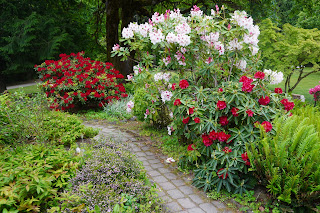Moving to the Second Jhana: Overcoming Challenges in Deep Meditation
The Journey to the Second Jhana
As I deepened my meditation practice, the experience of the first Jhana brought a profound sense of joy and rapture, a breakthrough into states of consciousness I had never imagined. But as rewarding as the first Jhana is, it is only the beginning of the journey. The second Jhana beckons with a promise of even deeper peace, a stillness more profound than the joy of the first.
Moving from the first Jhana to the second is not merely about achieving a “next level” in meditation—it is a natural progression that reflects the evolving state of mind as concentration strengthens. In the second Jhana, the joy and rapture that characterized the first Jhana give way to a calmer, more refined inner contentment. The sense of effort dissolves, and the mind becomes more fully absorbed, free from distractions and restlessness.
In this article, I’ll explore my personal reflections and experiences in overcoming the challenges of transitioning from the first to the second Jhana. Each step deeper into Jhana meditation has revealed new insights and hurdles, and I’ll share the strategies and mindset shifts that helped me make the transition. My hope is that this personal account will offer guidance for others who are walking this meditative path.
Letting Go of Joy: Embracing Inner Calm
The shift from the first Jhana to the second was not as straightforward as I expected. One of the biggest challenges I faced was letting go of the joy and rapture that initially made the first Jhana so rewarding. The joy in the first Jhana feels like a victory—a sign that you’ve reached a deep state of concentration. However, this joy, as fulfilling as it is, can become an obstacle in itself.
In the second Jhana, joy fades into the background, replaced by a deeper, more stable inner calm. This was difficult for me to accept at first. Joy feels like progress, and letting go of it seemed counterintuitive. But as I progressed, I realized that the second Jhana requires relinquishing the excitement of joy to reach a more profound state of equanimity.
The transition was not without resistance. Each time I would reach the cusp of the second Jhana, the desire to hold onto the joy of the first would pull me back. Through repeated practice, I learned to trust the process and let the joy naturally subside, allowing my mind to settle into a calmer, more peaceful state.
The lesson here is that the deeper we go into meditation, the more we must release, even the things that initially felt like milestones. It’s a process of trusting the unfolding of concentration and surrendering to the stillness that follows.
Deepening Focus: The Power of One-Pointedness
As the joy of the first Jhana faded, what emerged in its place was a profound sense of one-pointed focus. This stage in my meditation journey felt like the mind sharpening itself, becoming more stable and unwavering. In the second Jhana, the mind becomes deeply absorbed in the meditation object, and all the initial excitement and restlessness are replaced by a serene concentration.
This level of focus was something I had never experienced before. It wasn’t just about keeping my attention on the breath or a mantra; it was about a complete immersion in the present moment, without any distractions. The mind no longer wavers—it becomes like a still lake, reflecting only the meditation object.
However, this came with its own challenges. Achieving one-pointedness required patience and a willingness to surrender completely to the practice. It’s easy to get pulled back into the thoughts and emotions that once distracted you, but in this phase, the mind needs to learn how to rest in the stillness without resistance.
I noticed that my body responded to this deepening focus as well. The physical sensations of relaxation intensified, and my breathing became more subtle. This was a clear indication that I was no longer relying on external stimuli to keep my focus but was truly resting in the depth of concentration.
The power of one-pointedness is that it builds a foundation for even deeper states of meditation. The mind, once settled, becomes capable of exploring the subtleties of consciousness that are only accessible when distractions are completely absent. It’s a powerful reminder that the deeper we go, the more still and stable our awareness must become.
Overcoming Subtle Hindrances: A Shift in Awareness
Entering the second Jhana brought me face-to-face with subtler forms of distraction and hindrance than I had encountered before. These weren’t the loud, obvious distractions of external noise or wandering thoughts, but subtle internal shifts that could still pull my attention away from the meditation object.
One of the challenges in this stage was recognizing how subtle forms of desire, even the desire to remain in this deep state of concentration, could become a hindrance. I realized that attachment to the joy and tranquility of the first Jhana could hold me back from advancing to deeper levels of meditation. To move forward, I had to let go of any sense of grasping and allow the meditation to unfold naturally, without forcing anything.
Another subtle hindrance I encountered was restlessness—not in the typical sense of physical agitation, but in a quieter, internal way. My mind sometimes struggled with maintaining the deeper focus required in the second Jhana, occasionally drifting into thoughts about the future or reflections on the experience itself. These moments reminded me that even in deep meditation, the mind can still attempt to pull you back to familiar patterns.
In overcoming these hindrances, I found that the key was to cultivate a profound sense of equanimity—a deep, inner balance where neither desire nor aversion could sway my concentration. This shift in awareness allowed me to go deeper into the meditative state, as my mind became more settled and less reactive to the subtleties of internal distraction.
The process of overcoming these hindrances taught me that meditation is not just about experiencing peace and bliss but about navigating the mind’s tendencies with patience and insight. It required a level of awareness that went beyond simply focusing on the breath—it was about observing the layers of thought and sensation that could arise, and letting them go without attachment.
Overcoming Subtle Hindrances: A Shift in Awareness
Entering the second Jhana brought me face-to-face with subtler forms of distraction and hindrance than I had encountered before. These weren’t the loud, obvious distractions of external noise or wandering thoughts, but subtle internal shifts that could still pull my attention away from the meditation object.
One of the challenges in this stage was recognizing how subtle forms of desire, even the desire to remain in this deep state of concentration, could become a hindrance. I realized that attachment to the joy and tranquility of the first Jhana could hold me back from advancing to deeper levels of meditation. To move forward, I had to let go of any sense of grasping and allow the meditation to unfold naturally, without forcing anything.
Another subtle hindrance I encountered was restlessness—not in the typical sense of physical agitation, but in a quieter, internal way. My mind sometimes struggled with maintaining the deeper focus required in the second Jhana, occasionally drifting into thoughts about the future or reflections on the experience itself. These moments reminded me that even in deep meditation, the mind can still attempt to pull you back to familiar patterns.
In overcoming these hindrances, I found that the key was to cultivate a profound sense of equanimity—a deep, inner balance where neither desire nor aversion could sway my concentration. This shift in awareness allowed me to go deeper into the meditative state, as my mind became more settled and less reactive to the subtleties of internal distraction.
The process of overcoming these hindrances taught me that meditation is not just about experiencing peace and bliss but about navigating the mind’s tendencies with patience and insight. It required a level of awareness that went beyond simply focusing on the breath—it was about observing the layers of thought and sensation that could arise, and letting them go without attachment.
The Shift from Joy to Tranquility: A New Depth of Calm
As I moved deeper into the second Jhana, I experienced a distinct shift from the intense joy that characterized the first Jhana to a more profound sense of tranquility and inner peace. This transition was both subtle and significant.
In the first Jhana, the joy was vibrant, almost euphoric—a sensation that filled every part of my being. But as I entered the second Jhana, that joy began to subside, replaced by a calm that felt more stable and less emotionally charged. It was as if the initial excitement of the meditative state had settled, allowing for a deeper, more sustainable peace to emerge.
This tranquility was not the absence of feeling, but rather a state of deep contentment. I felt a quiet stillness at my core, free from the emotional highs and lows that had accompanied the earlier stages of meditation. It was a state of pure being, where the mind no longer clung to the rapture of the first Jhana but rested in a more enduring sense of balance.
The transition from joy to tranquility required me to let go of my attachment to the bliss of the first Jhana. I had to trust that the deeper calm I was experiencing was just as valuable, if not more so, in the journey toward deeper meditation. This required a subtle shift in my focus—away from the sensations of joy and toward the stillness that lay beneath them.
One of the most profound insights from this stage was the realization that joy, while an important part of the meditative process, is not the end goal. It is a stepping stone to a more refined, stable state of mind. The tranquility I experienced in the second Jhana felt like a truer form of peace, one that wasn’t dependent on external sensations or emotions but arose from within.
This phase of meditation also deepened my understanding of equanimity. As the joy subsided, I found myself in a space where I could observe my thoughts and emotions without being swayed by them. It was a state of inner quiet, where even the subtlest ripples of thought could be noticed and let go without effort.
The second Jhana taught me that true meditation is about embracing whatever arises with openness and non-attachment. It’s about finding a place of calm within the mind, where you can rest in the present moment without seeking or clinging to any particular experience.
Sustaining Tranquility: Techniques and Insights
Maintaining the tranquil state of the second Jhana involved more than just a passive continuation of previous practices. It required active engagement with specific techniques that helped deepen and stabilize my concentration.
One effective technique was the refinement of my focus. In the first Jhana, my concentration was primarily on the joyous sensations. However, in the second Jhana, I shifted my focus to the stillness that underpinned these feelings. This shift involved a more nuanced approach to mindfulness, where I observed the quiet space between thoughts and emotions, rather than the content of the thoughts themselves.
Another key aspect was the practice of letting go. The second Jhana demanded a relinquishment of any attachment to the rapturous joy of the first state. This letting go was not a rejection of joy but an acceptance that there was a deeper peace beyond it. It required a gentle but firm resolution to not cling to any experiences, allowing them to arise and pass without resistance.
I also found that regularity in practice was crucial. Consistent meditation sessions helped condition my mind to enter and sustain the second Jhana with greater ease. Each session built upon the last, creating a cumulative effect that deepened my ability to access this state more readily.
Insights gained during this phase were profound. I realized that the depth of tranquility achievable in meditation is directly proportional to the ability to let go of both positive and negative attachments. The peace of the second Jhana was not an absence but an active presence of calm that pervaded all aspects of consciousness.
Additionally, this stage of meditation underscored the importance of patience. The process of deepening into tranquility was gradual and required perseverance. It was a reminder that significant transformations in meditation, as in life, do not happen overnight but through persistent, dedicated effort.
The techniques and insights from this phase of my meditation journey were instrumental not only in sustaining the second Jhana but also in enhancing my overall mental and emotional resilience. They provided a toolkit for dealing with the ups and downs of everyday life, grounding me in a state of calm that was both robust and adaptable.
As I moved into the second Jhana, I discovered several key lessons that reshaped my approach to meditation and life in general. One of the most valuable insights was the importance of letting go of expectations. The second Jhana taught me that deeper meditative states cannot be forced. Instead, they arise naturally as the mind becomes more refined and focused. This lesson extended beyond meditation into my daily life, reminding me to approach challenges with patience and acceptance rather than frustration or urgency.
Additionally, I learned to embrace the idea of impermanence. The transition from the first to the second Jhana reinforced the understanding that these meditative states, while profound, are fleeting. Instead of trying to hold onto them, I allowed myself to experience them fully without attachment, which led to greater peace and clarity in both meditation and daily life.
These lessons continue to influence my meditation practice, deepening my connection to the present moment and helping me to refine my focus as I move further along this journey.
Integrating Second Jhana Insights into Daily Life
After experiencing the second Jhana, I found that the lessons and insights gained during meditation began to naturally seep into my everyday life. One of the most powerful changes was the cultivation of a deeper sense of equanimity. The tranquility and joy experienced in the second Jhana seemed to stay with me long after my meditation session had ended, influencing how I approached daily tasks and interactions.
For instance, I became less reactive to stressful situations. When faced with challenges, I noticed that my response was calmer and more measured. Instead of being swept away by the intensity of the moment, I was able to step back and observe the situation with a clearer, more balanced perspective. This inner calm created a buffer between my emotions and my reactions, allowing me to approach life’s difficulties with greater composure.
Furthermore, the joy I had experienced in the second Jhana deepened my appreciation for simple, everyday moments. Activities that once felt mundane—like making a cup of tea or taking a walk—now carried a sense of peace and contentment. The meditative joy wasn’t confined to my practice; it permeated my life, turning ordinary experiences into moments of mindfulness and gratitude.
This integration of Jhana insights into daily life has been transformative. It reinforced that meditation is not just about achieving certain states during practice, but about allowing those states to enhance the quality of life outside of meditation. The second Jhana became more than just a goal; it became a tool for cultivating deeper mindfulness, joy, and inner peace in every aspect of life.
Final Thoughts on Progressing to the Second Jhana
As I reflect on my journey from the first Jhana to the second, I realize that each step forward in meditation brings new challenges but also deeper rewards. Moving from the rapture of the first Jhana to the calm of the second required more than just concentration—it demanded a fundamental shift in how I approached my practice. The sense of tranquility that comes from the second Jhana is a reminder that the deeper we go into meditation, the more subtle the mind’s states become.
In this journey, persistence, patience, and self-compassion have been essential. Every session, whether it’s filled with progress or setbacks, contributes to my understanding and growth in meditation. The transition to the second Jhana is not about chasing after a state but allowing it to arise naturally through focused, calm awareness.
As I continue this exploration, I remain curious about the new insights and experiences that will arise in the deeper levels of meditation. Each Jhana offers its own unique challenges, but the peace and joy that follow make every moment of the practice worthwhile. This path is one of continuous learning, and I look forward to what lies ahead.
Resources for Deepening Your Meditation Practice with the Jhanas
- Entering the Formless Jhanas: My First Steps into Infinite Space
Read the full article - Common Pitfalls and Misconceptions About the Jhanas: What I’ve Learned
Explore insights - Achieving Equanimity in the Fourth Jhana: My Experience
Discover more - Meditation and Creativity: 10 Techniques to Unlock Your Creative Potential
Learn techniques - Reflection on My Jhana Journey: Integrating Meditation Insights
Read reflections - How the Jhanas Have Transformed My Spiritual Path
Explore transformation - Applying Jhana Meditation Insights to Everyday Life
Apply insights - My Journey into the Third Jhana
Read about the third Jhana - The Journey to the Second Jhana
Explore the second Jhana - Finding Joy and Tranquility in the First Jhana: Personal Reflections
Discover joy and tranquility - Moving to the Second Jhana: Overcoming Challenges in Deep Meditation
- First Jhana: My Personal Journey into Deep Concentration
- How to Prepare Your Mind for Jhana Meditation: Tips for Beginners






